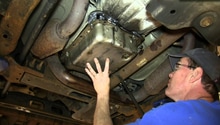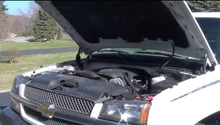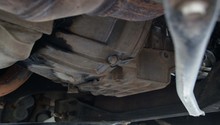Chevrolet Silverado: Why is My Transmission Slipping?
Your transmission may be slipping, but it may not be the end of the world. There are a few things you can easily do to check it out.
This article applies to the Chevrolet Silverado GMT800, GMT900, and K2XX (1999-Present).
If the transmission in your truck is a GM 4-speed OD 4L60E, then it is electronically controlled, but other than that it is nothing fancy. With that being said, it gets used every time you drive it. It is based off of an earlier design that was used for many years in cars and trucks. Since it is fully electronically controlled, diagnosis takes on a little different path but you can do it. The later Silverados have the newer 6L80E transmission, which can be diagnosed in much the same way. To find out why it is slipping, just open yourself up to learning something new and go for it!

Material Needed
- OBD-II code reader
Step 1 – Check your transmission fluid
Transmission fluid means everything for your transmission. Checking the level and life of your fluid is the best place to start. While you have the dipstick out, look at and smell the fluid. It should be pinkish red and smell fresh. Brown fluid that smells burnt is not good. Check your fluid when it is hot. The acceptable range is called out on the dipstick.
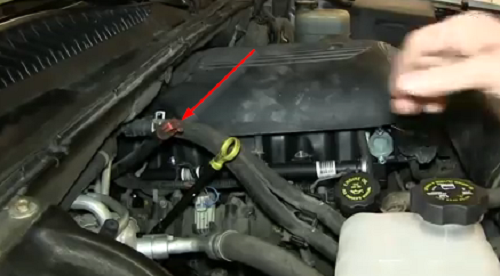
If the level is acceptable, go on to Step 2.
Pro Tip
Changing the transmission fluid and filter in your truck is cheap insurance for a transmission that lasts.
Step 2 – Read trouble codes
Since your transmission is controlled by the powertrain control module (PCM), it also keeps track of any trouble codes that are thrown. Codes can be invaluable in your diagnosis. You access the PCM through the OBD-II link inside of the cab.
Even if your check engine light is not on, codes can be stored. They may be deep within the PCM, so the reader from your local auto supply may not be able to get to them. It will be worth it to pay the $89 to see what it has recorded. You may want to go to Step 3 to see the typical 4L60E problems before you have them read. It is possible that a very specific code may show to change a solenoid or switch. The code may be general, or it may be specific and tell you that the transmission is slipping.
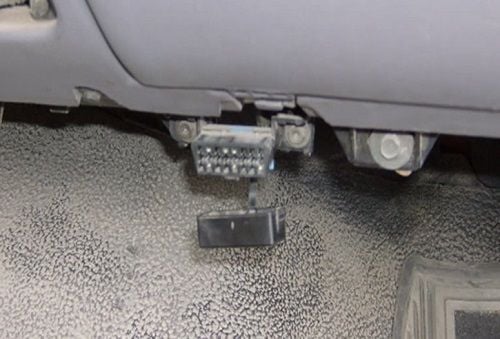
If it is specific, then replace what the code says. If it is general, then proceed to Step 3.
Pro Tip
The OBD-II connector lets you access the memory in your PCM, and you will be able to get a lot of information about your truck.
Step 3 – Common problems with the 4L60E
These issues commonly can cause your transmission to slip. See if they apply to you and see what the solution is.
Slow, slipping, or no reverse:
- You have a broken sunshell, or circuit issue in the valve body.
- A broken sunshell requires the transmission to be taken apart. Sometimes, a transmission restorer additive may help the circuit issue.
No 3rd or 4th gear:
- The 3rd-4th clutches are worn out.
- The transmission needs to be replaced or repaired.
1st and 3rd only, but no 2nd, 4th, or reverse:
- The sunshell is damaged.
- The transmission needs to be replaced or repaired.
No 2nd or 4th gear:
- The 2-4 band is slipping, or servo seals are leaking.
- Servo seals can be replaced without pulling transmission, or the transmission must be removed for band replacement.
No 1st or 4th gear, and transmission shifts from 2nd to 3rd by itself:
- The shift solenoid has failed, or there is a wiring problem between PCM and transmission.
- Replace the shift solenoid located in transmission pan, or check wiring continuity.
No 2nd or 3rd gear:
- Shift solenoid B failed, or there is a wiring problem between PCM and transmission.
No Drive in OD or D, but L2, L1 and R work:
- The forward sprag is broken.
- The transmission needs to be replaced or repaired.
Will not move in any gear:
- You might have a pump failure. Check to see if the fluid level changes when not running and running. If it does not, then the pump failed.
- The transmission needs to be replaced or repaired.
Pro Tip
Any slippage issue means you probably should not be driving your truck. This may save you money if the transmission needs to be rebuilt.
Related Discussions
- Silverado Transmission Problems - ChevroletForum.com
- 4L60E Transmission Problems - ChevroletForum.com
- Transmission Slipping - ChevroletForum.com
- Transmission Problem, Help! - ChevroletForum.com




